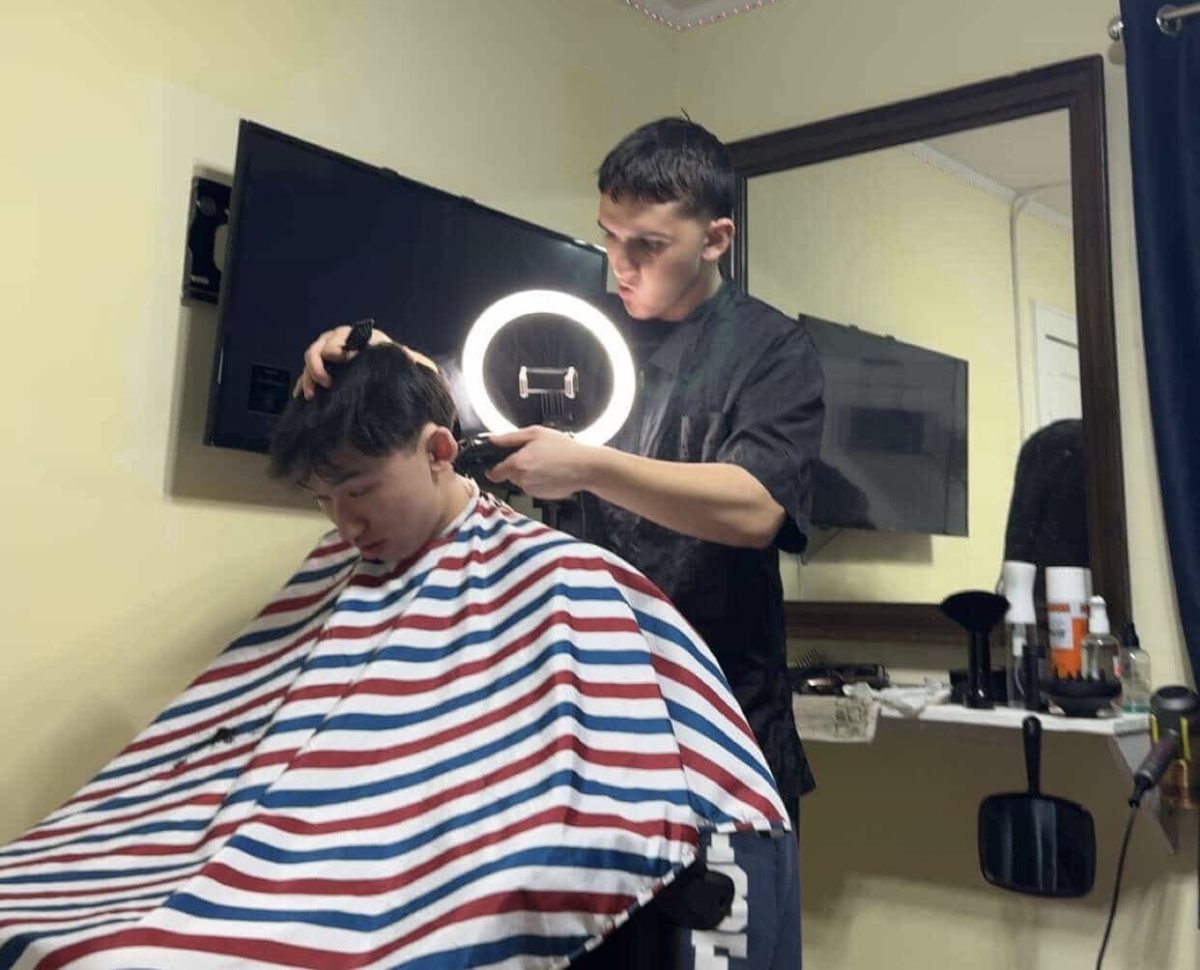
By Matthew Portnoy and Hannah Weinberger
As the curtains open, junior Sophie Hod, student at the Ballet Academy East (BAE), stands behind the curtains anxiously awaiting her first solo performance. A million thoughts swirl as she quickly runs through the routine in her head. As the curtains rise, she reviews the proper arm movement, appropriate facial expressions, and accurate footwork. She inhales deeply then exhales slowly, letting her body move naturally to the rhythm of the music.
As the song comes to an end and she finishes her last steps, she looks past the bright lights into the crowd. For the first time, she sees an entire audience applauding only her. Hod can now take her first breath of relief after practicing rigorously for the past three months. However, her relief quickly recedes as she thinks about her impending daily practices. Despite this realization, this experience is one of Hod’s favorite moments in her dance career.
A typical day for Hod begins as a typical day for any other high school student: waking up at 6:30 and rushing to her school bus. Then, she rushes through her classes just like most sixteen year olds. But by the end of eighth period, her day is only halfway over. Instead of racing to class to beat the bell like her peers do, Hod races home and prepares to take the 2:20 train into Penn Station. After taking four different subways leading to the Upper East Side, she walks for seven more blocks until she reaches the BAE dance studio. With no time to lose, Hod quickly puts her bag down and heads to her first class.
Hod never settles into a monotonous routine at BAE. Occasionally, she helps out with the younger girls’ ballet practice from 3:45 to 4:30, and most days she has technique class from 4:30 to 6:00. Depending on the day, she will either have pointe or modern dance class from 6:00 to 7:30.
For Hod, dance never ends. As one class ends, another one begins, leaving almost no time for breaks. Hod dances every day of the week except Sunday, when she has to complete her school work. For all the dedication Hod puts into ballet, one might assume her walls are adorned with competition medals; however, Hod explains, “I don’t dance to win medals or trophies. I dance because it’s something I enjoy exploring and can hopefully be successful at in the future.” Her reward is the feeling of accomplishment after finishing a performance, not the physical prize that most people crave.

Hod actually doesn’t compete at all: each year, she performs in two dance recitals, and for the rest of the year, she is either practicing for them or learning more about dance.
The hard work and dedication she puts into dance does not go unnoticed in the Hod household. While most moms try to inspire their children to set their minds to a goal and then work hard to achieve it, in Janet Hod’s case, she is the one being inspired by Sophie who “manages to juggle school, ballet, and her social life.” She acknowledges how stressful each day can be for her daughter but recognizes that “multitasking comes naturally for her and her ability to succeed in all aspects makes me have the utmost respect for her dedication and perseverance.” Mrs. Hod knows that Sophie has had to make many sacrifices to maintain this hectic lifestyle.
Some of these sacrifices include missing family vacations, staying home doing school work instead of spending time with friends, and even missing the sixth grade Greenkill trip. Hod also chooses to take mainly regular school courses: She knows that she would not be able to balance both a demanding workload and her daily dance schedule.
Another sacrifice Hod has had to make: physical comfort. This past summer, Hod sprained her ankle while dancing. Her injury not only prohibited her from dancing for a full month but also left her unable to walk for a week. Dancers must face the repercussions of major injuries and also deal with the daily stress that dancing puts on their bodies.
Despite the agony her body goes through on a daily basis, Hod says that she stays motivated by “the redeeming feeling after a performance or even after a great class.” Hod admits that at times she gets tired and stressed but explains, “Dance is just a part of me that I can’t let go of. I wouldn’t give it up for the world.”





